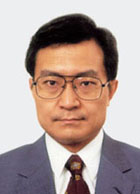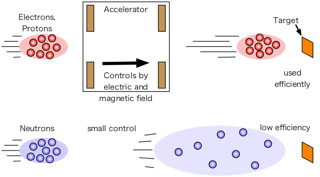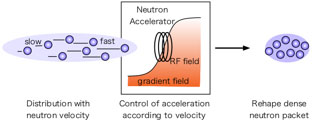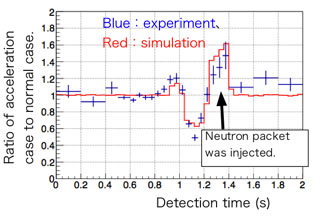Assoc Prof Iwashita, Y., et. al. ”Demonstration of Neutron Accelerator” (Published in “Physical Review A” 23 August 2012)
|
Demonstration of neutron accelerator Published in “Physical Review A“(Online Publication, August 23, 2012).
Assoc Prof. Iwashita, Y., et. al. (Particle Beam Science, Advanced Research Center for Beam Science ) |

Assoc prof Iwashita, Y. |
||||
| Today neutron beam is utilized widely, for example investigations of material structure and cancer therapy, however, the utilizing efficiency is limited because control of neutrons without electric charges is difficult by conventional accelerator technique. Assoc Prof. Yoshihisa Iwashita and collaborators (Kyoto Univ., Kyushu Univ., Nagoya Univ., KEK, RIKEN) have demonstrated neutron accelerator with gradient magnetic field and RF field to control the neutron movement precisely and to improve the efficiency. | |||||
| Electrons, protons and other charged particles can be accelerated with electric fields. Neutrons cannot be handled by the same way. We took notice of the character of a neutron as a tiny magnet (called as ‘magnetic dipole moment’). The gradient magnetic field pushes or pulls a magnetic dipole moment. We have already developed neutron lens, which exerts the force for transverse direction by sextupole magnets. Neutron beam can be focused to transverse direction by the lenses to improve the efficiency for the neutron small angle scattering experiments. | 
Figure 1. Accelerator for charged particles enables us to use the beam efficiently (Top). Control of neutrons was difficult because neutrons don’t have electric charge (Bottom). |
||||
| Although neutrons can be accelerated or decelerated by the force to the longitudinal direction in principle, this technique was not demonstrated before. The velocity does not change because the net force is equal to zero only through the magnetic potential. When the force to the neutron reverses in the middle of the traveling, the net force can be finite value to make the velocity change. Combination of gradient magnetic field and high frequency RF field makes flipping of neutron magnetic moment to change of the direction of the force in the magnetic field. | |||||
| Now we have demonstrated this type of neutron accelerator to control the neutron velocity precisely. We have also observed space-time focusing of neutrons by controlling the energy distribution of the neutrons successfully. This technique enables us to improve the neutron density at the experimental area. This will be a powerful technique for measurements which require high density of neutrons, for example, the search of the permanent electric dipole moment of neutrons, which is related to the violation of time-reversal invariance in particle physics. | |||||

Figure 2. Our neutron accelerator system can reshape the neutron packet at the experimental position by using gradient magnetic field and RF field. |

Figure 3. The data tells us that the neutron packet was injected and made the peak in the graph. |
||||
| Arimoto, Y.; Geltenbort, P.; Imajo, S.; Iwashita, Y.; Kitaguchi, M.; Seki, Y.; Shimizu, H. M.; Yoshioka, T., Demonstration of Focusing by a Neutron Accelerator, Phys. Rev. A, 86, 023843 (2012). | 
Figure 4. Members of the collaboration. Neutron accelerator can be seen behind the members. |
||||
| Related Links Kyoto University Research Reactor Institute |
|||||
 Institute for Chemical Research, Kyoto University
Institute for Chemical Research, Kyoto University International Joint Usage Research Center
International Joint Usage Research Center